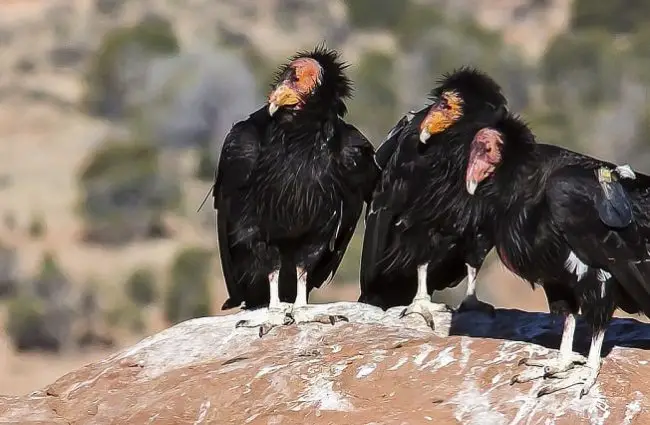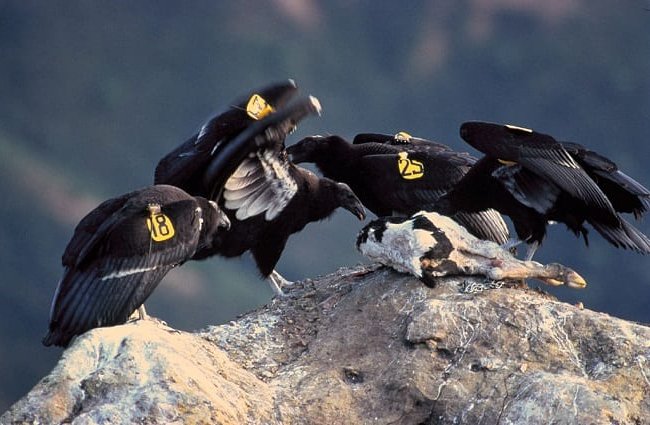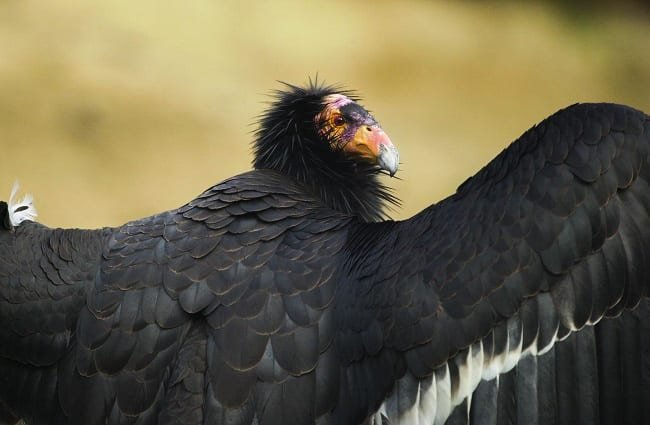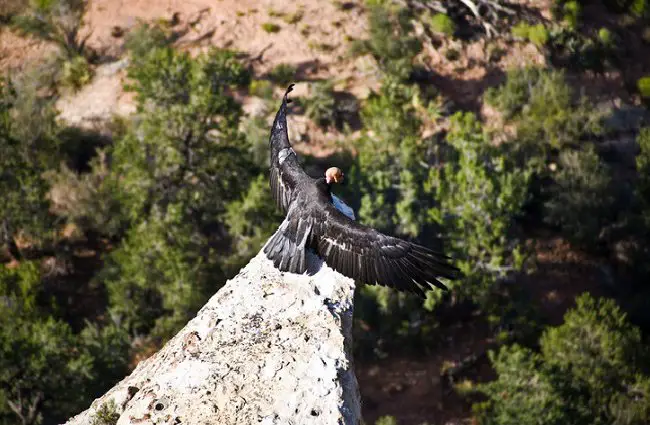A Majestic Return: Unveiling the World of the California Condor
The California Condor, Gymnogyps californianus, is a New World vulture that symbolizes both ecological fragility and remarkable conservation success. Once on the brink of extinction, this magnificent bird is slowly reclaiming its place in the skies of the American West. This guide explores the life history, ecology, and ongoing recovery of this iconic species, offering insights for researchers, animal enthusiasts, and anyone fascinated by the natural world.

A Glimpse into the Past: Evolution and History
The California Condor’s lineage stretches back millions of years. As a New World vulture, it is more closely related to storks than to Old World vultures. Fossil evidence shows that condor-like birds were widespread across North and South America. The California Condor evolved to fill the niche of a large scavenger, playing a vital role in maintaining ecosystem health. Historically its range extended from British Columbia to Baja California, and eastward into the Great Plains.
A Population in Peril
By the mid‑20th century, the California Condor population had dropped to alarmingly low levels. Habitat loss, lead poisoning from ammunition in carrion, and shooting all contributed to the decline. In 1987 the last remaining wild California Condors were captured in a desperate effort to save the species. Twenty‑seven individuals formed the basis of a captive‑breeding program, preserving nearly the entire genetic diversity of the species.

Life in the Skies: Habitat, Diet, and Behavior
California Condors are masters of the air, using soaring flight to cover vast distances with minimal effort. They occupy mountainous regions, chaparral, oak savanna, and grasslands, nesting on cliffs and foraging over open landscapes. These habitats provide suitable nesting sites and abundant carrion, the cornerstone of their diet.
A Scavenger’s Feast
These birds are obligate scavengers, feeding exclusively on dead animals. Their diet includes a wide range of carcasses—from deer and elk to cattle and smaller mammals. They locate food using exceptional eyesight and by observing other scavengers, such as ravens and vultures. A group of feeding condors is called a wake. Their strong beaks are adapted for tearing flesh, and their featherless heads keep them clean while feeding. Their digestive system is robust, neutralizing many bacteria and toxins found in decaying carcasses.
Social Structure and Reproduction
California Condors are highly social, often congregating at roosting and feeding sites. They typically mate for life, forming pair bonds that can last for decades. Breeding pairs nest in caves or on ledges, laying a single egg, rarely two. Both parents incubate the egg for about 58 to 60 days. The chick, or squab, is fed regurgitated food by both parents and takes nearly six months to fledge. Young condors reach full maturity at around six to seven years of age.

Ecology and Ecosystem Contributions
As scavengers, California Condors help maintain ecosystem health by consuming carcasses, preventing the spread of disease, and removing potentially harmful organic matter. This process contributes to nutrient cycling and benefits other wildlife. They also indirectly support populations of other scavengers by leaving behind smaller pieces of carrion. Their presence signals a healthy, functioning ecosystem.
Interactions with Other Animals
Condors often interact with other species at carcasses. They compete with ravens, coyotes, and vultures for food, but also tolerate their presence. They sometimes engage in kleptoparasitism, stealing food from other scavengers. Condors also feed on the remains of animals killed by predators, cleaning the landscape and reducing the risk of disease transmission. Turkey vultures often lead the way to carcasses, and condors follow, benefiting from the vultures’ keen sense of smell.

A Cultural Icon: History and Human Interactions
California Condors hold significant cultural importance for many Native American tribes in the western United States. They appear in traditional stories, ceremonies, and artwork, symbolizing spiritual power, renewal, and a connection to the land. For some tribes, condors are sacred animals and play a vital role in cultural identity. In recent times, the condor has become a symbol of conservation and environmental stewardship.
Challenges and Conservation Efforts
Lead poisoning remains the greatest threat to California Condors. Ammunition fragments left in animal carcasses are ingested by the birds, causing neurological damage, organ failure, and death. Conservation efforts focus on reducing lead exposure by promoting non‑lead ammunition, removing carcasses, and providing supplemental food sources. Ongoing captive‑breeding programs bolster the population, and reintroduction efforts have established wild populations in California, Arizona, and Baja California.

Encountering a Condor in the Wild: What to Do
If you are fortunate enough to spot a California Condor while hiking or exploring, observe it from a distance. If you see a condor showing signs of illness or injury, contact a wildlife rehabilitation center immediately. Never intentionally feed a condor, as this can disrupt its natural foraging behavior and create dependence on human food.
For the Zoo Keeper: Caring for Captive Condors
Providing optimal care for captive California Condors requires specialized knowledge and attention. A spacious enclosure that allows for soaring flight is essential. The diet should consist of whole carcasses, supplemented with vitamins and minerals. Regular veterinary checkups are crucial for monitoring health and detecting signs of lead poisoning or other illnesses. Enrichment activities, such as puzzle feeders and novel objects, stimulate the bird’s mind and prevent boredom. Strict biosecurity measures protect the birds from disease. Attention to social dynamics is also important, as condors thrive in a social environment.
Fascinating Facts
- Lineage – The species originated over 1.5 million years ago.
- Population – Over 1,200 individuals are now known.
- Habitat – They are found in mountains, grasslands, and savannas.
- Size – They can grow up to 4.3 meters in wingspan.
- Behavior – They spend most of their time in open, flat areas and only rarely fly over water.
- Unique Identification – They can be identified by their long, curved beak and the absence of feathers on their heads.
- Number of Reintroduced Condors – As of 2023, more than 500 California Condors have been reintroduced, with over half living in the wild.

A Future in Flight
The story of the California Condor demonstrates the power of conservation. While challenges remain, the continued efforts to protect this magnificent species are producing positive results. As the population grows, the California Condor is becoming once again a symbol of hope and resilience, soaring across the western skies.

![Red Angus Closeup of a beautiful Red Angus cowPhoto by: U.S. Department of Agriculture [pubic domain]https://creativecommons.org/licenses/by/2.0/](https://animals.net/wp-content/uploads/2020/03/Red-Angus-4-238x178.jpg)




![Red Angus Closeup of a beautiful Red Angus cowPhoto by: U.S. Department of Agriculture [pubic domain]https://creativecommons.org/licenses/by/2.0/](https://animals.net/wp-content/uploads/2020/03/Red-Angus-4-100x75.jpg)

